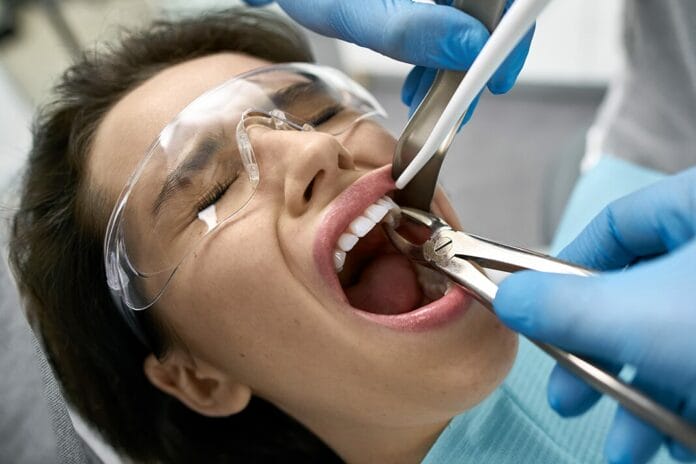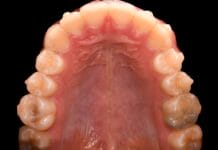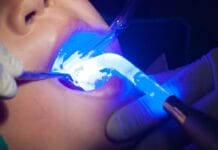There are many different routine treatments provided in dentistry, including tooth extraction. The reasons for extractions vary, but they are usually performed based on valid clinical indications such as caries and periodontitis. Conversely, nondental reasons without valid clinical indications can play a role in patients’ requests for extractions.1
Since extractions are irreversible and can have considerable adverse effects, dentists and oral maxillofacial surgeons (OMFS) must balance ethical principles, including beneficence (“do good”), while also following the principle of nonmaleficence (“do no harm”). Additionally, they must respect the patient’s autonomy (“self-governance”).1
Despite this need for careful consideration, the specific process involved in developing an individual patient’s treatment plan is not well understood. Further, there is limited research, especially from the patient’s viewpoint, regarding how often and why nondental extractions (extractions without valid clinical necessity) occur.1
Though limited, previous studies have indicated the most common nondental reasons for extractions include financial, psychological considerations (i.e., dental anxiety, dental fear), or both. Previous studies also indicate that OMFS receive more requests for nondental extractions than dentists. However, they suggest that dentists oblige extraction requests more often than OMFS for nondental reasons, especially if the concern is based on financial constraints.1
The gaps in existing research make it challenging to determine whether extractions discussed in these previous studies were ethically justified. To better understand the findings of the previous studies and fill the gap regarding patients’ perspectives, a study was completed to “investigate the extent to which patients’ perspectives on extraction for nondental reasons correspond to dental professionals’ perspectives.”1
The Study
The study design was a prospective clinical observational study comprised of three components: a survey of patients, registration forms for dentists, and registration forms for OMFS.1
The patient questionnaire consisted of six questions; one was open-ended, while the other five were multiple-choice. The questions gathered information including age, country of birth, highest level of education, and the reason or reasons for the extraction request. The reasons for nondental extraction requests were subdivided into psychological, financial, cultural, aesthetic, and other reasons. Psychological reasons were further subdivided into phobia, posttraumatic stress disorder, unexplained pain, body dysmorphic disorder, unknown, and otherwise.1
The registration forms for dentists and OMFS consisted of ten multiple-choice questions relating to reasons for extraction, whether the extraction was completed, and the proposed follow-up in the case the clinician refused to complete the extraction.1
Both dental professionals and patients had the option to add any remarks to the questionnaire that they felt may be helpful or relevant. This allowed for better descriptions of events and any other concerns in their own words.1
A total of 21 dentists and 20 OMFS participated in the study. Of the 756 patients who participated, all were 18 or older and visited the participating facilities between October 1, 2019, and June 1, 2022, requesting one or more permanent tooth extractions. Patients seeking third molar extractions were excluded, as well as any patients with severe medical, mental health, or intellectual disabilities.1
After treatment, the dentists and OMFS completed the registration form documenting the reason or reasons for extraction and if the extraction was completed. Researchers gathered additional information from the patient’s files when necessary.1
The Results
This study found discrepancies between the subjectively assessed and reported reasons for nondental and valid clinical extractions between patients and clinicians.1
Mixed reasons for extractions were also documented. Mixed reasons were when there was a clinically valid dental reason to treat the tooth and the reported reason the patient chose extraction. For instance, an extraction for mixed dental and financial reasons may be more common among patients who do not have dental insurance.1
Patients reported nondental reasons significantly more often than dental professionals. The most reported reason for nondental extractions, according to patients, was psychological. Financial and aesthetic reasons were reported at the same rate, and a mix of psychological and financial reasons was reported least. Psychological reasons remained the most reported mixed reason for extraction.1
Conversely, according to dentists and OMFS included in the study, most extractions were for dental reasons only. Dentists reported that 89.1% of extractions were completed for only dental reasons, and 87.8% of extractions completed by OMFS were reported as due to dental reasons.1
Dentists and OMFSs reported nondental reasons for extractions were primarily psychological factors. A mix of psychological and financial reasons was the second most reported reason. A small percentage indicated financial reasons alone, while there were no reports of aesthetics.1
Mixed reasons were also common. Dentists and OMFS reported psychological reasons as the primary reason, with financial reasons being reported as the second most common reason the extraction was completed.1
When comparing the results of patients’ and clinician’s reports, they agreed about 75% of the time. When patients and clinicians gave different reasons for extraction (16.8% of the time), patients were three times more likely to provide a nondental reason. There was a subset of about 8% with unknown data on whether the patients and clinicians agreed.1
The authors of this study suggest that patients may report nondental reasons more often than dental professionals because the reasons may affect the patient more intensely, such as financial and psychological factors. The main reasons reported for nondental extraction were indeed primarily financial and psychological.1
Additionally, the authors suggest the patient’s expectations may play a role as patients often believe “their wish should be the practitioners’ command” regardless of dental or nondental grounds. In contrast, dental professionals are more adept at identifying valid reasons for extractions, and many dental professionals may only consider clinical reasons as a sufficient justification for extraction. This could lead to dental professionals underreporting nondental reasons.1
Contrary to previous studies, the results of this study showed that OMFS were not more likely to report nondental reasons than dentists. This finding could be attributed to the different study designs. The previous study was a retrospective survey that only included dentists and OMFS. The current study was a prospective observational study that included patients, dentists, and OMFS.1
Additionally, this study did not find that dentists were more likely to perform nondental extractions than OMFS. The findings indicate that extractions based solely on nondental reasons were not completed in this study cohort.1
There were limitations to this study, including possible selection bias, the lack of participation by clinics that offer general anesthesia, and the subjective nature of distinguishing between dental and nondental reasons for extractions.1
Conclusion
The results of this study highlight the importance of patients’ perspectives on oral health. This study identified a significant difference in patients’ reporting nondental reasons for extraction compared to dental professionals.1
This study also reinforces the profound impact of financial and psychological factors on patients. Additionally, patients might believe that their preference should be prioritized, while dental professionals rely on their clinical expertise to justify dental treatment options.1
Further research is needed to explore and understand the dynamics of nondental extraction requests.1
Before you leave, check out the Today’s RDH self-study CE courses. All courses are peer-reviewed and non-sponsored to focus solely on high-quality education. Click here now.
Listen to the Today’s RDH Dental Hygiene Podcast Below:
Reference
- Broers, D.L.M., Dubois, L., de Lange, J., et al. Patient and Practitioner Perspectives on Tooth Extractions without Clinical Justification. J Am Dent Assoc. 2025; 156(1): 28-36.e7. https://jada.ada.org/article/S0002-8177(24)00554-3/fulltext











